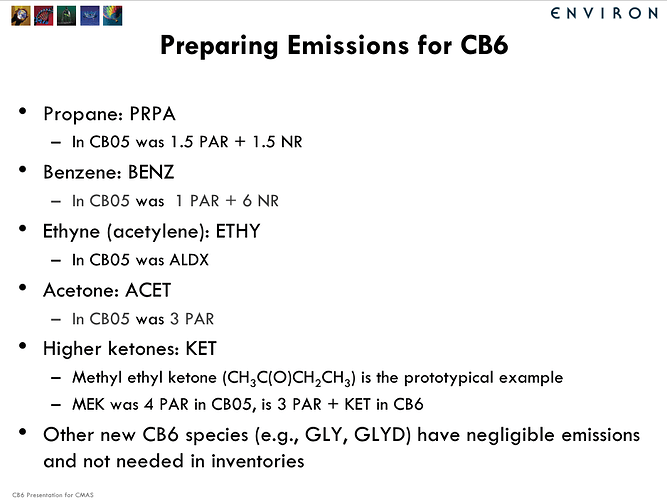Hi,
I would like to use the VBS mechanism for SOA simulation in CMAQ v5.2, but it seems no explicit way to activate it. I found a piece of code in CCTM/src/aero/aero6/AERO_DATA.F as follows:
C Primary Organic Aerosol Volatility Distributions
Integer, Parameter :: n_vbs_bin = 5
Character( 10 ) :: poa_name( n_vbs_bin ) = (/ ‘LVPO1’, ‘SVPO1’, ‘SVPO2’, ‘SVPO3’, ‘IVPO1’ /)
Real, Parameter :: poa_op_vf( n_vbs_bin ) = (/ 0.09, 0.09, 0.14, 0.18, 0.5 /) ! Aggregated
! The Following Volatility Distributions are alternative options
! but at this point can only be implemented indivdually for the
! entire POA suite of compounds.
! Real, Parameter :: poa_gv_vf(n_vbs_bin) = (/0.27, 0.15, 0.26, 0.15, 0.17/) ! Gasoline
! Real, Parameter :: poa_dv_vf(n_vbs_bin) = (/0.03, 0.25, 0.37, 0.24, 0.11/) ! Diesel
! Real, Parameter :: poa_bb_vf(n_vbs_bin) = (/0.2, 0.1, 0.1, 0.2, 0.4/) ! Biomass Burning
! Real, Parameter :: poa_nv_vf(n_vbs_bin) = (/1.0, 0.0, 0.0, 0.0, 0.0/) ! Nonvolatile
! Real, Parameter :: poa_mc_vf(n_vbs_bin) = (/0.35, 0.35, 0.1, 0.1, 0.1/) ! Meat Cooking
! POA_AMF is the fraction of total emissions in the particle phase.
! This parameter is for distributing the total emissions between
! gas and particle BEFORE the aerosol size distribution is applied.
! This helps prevent numerical issues with shrinking the particles
! instantaneously.
Real, Parameter :: poa_amf( n_vbs_bin ) = (/ 1.0, 0.5, 0.0, 0.0, 0.0 /)
C number of lognormal modes in windblown dust aerosol = n_mode
C - but only accumulation and coarse modes used
Type emis_table
Character( 16 ) :: description
Character( 16 ) :: name ( n_mode )
Real :: spcfac( n_mode )
End type emis_table
However, I am not sure whether it implements the VBS mechanism if I uncomment the piece of code. Moreover, is there anything I should do with the emission inventories if using the VBS mechanism?

